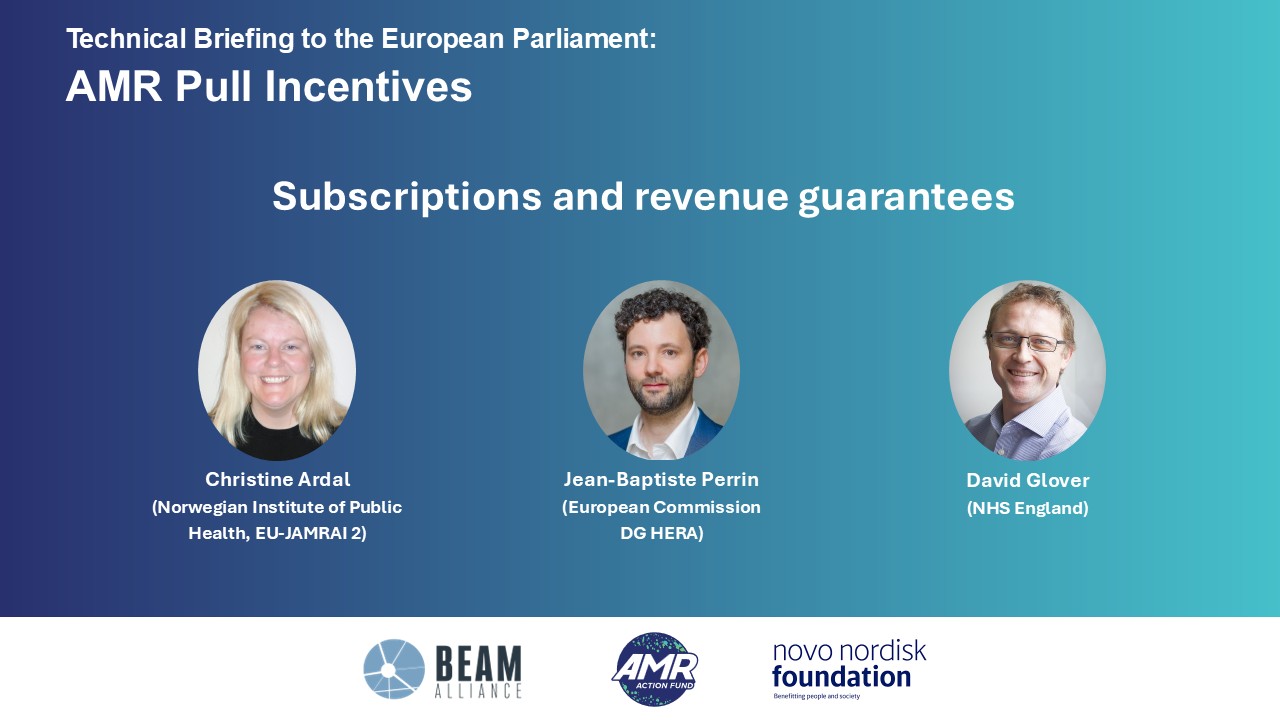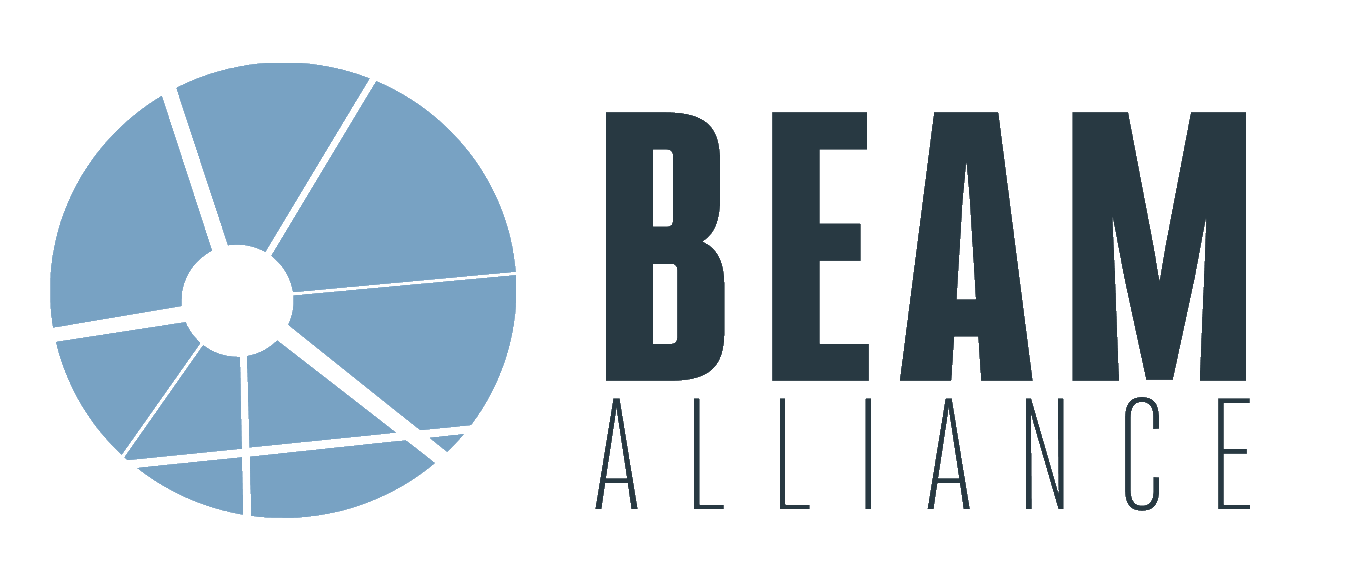How Can a Subscription Model Help Incentivizing Antimicrobial Innovation in the EU?
- BEAM Alliance


Among the various “pull” incentive models designed to spur antimicrobial development, the subscription (or revenue guarantee) model stands out as the most widely discussed. It has been implemented in the UK, piloted in Sweden and Japan, and is under consideration in Switzerland, Canada, the US, and Australia. However, scaling it up across Europe presents a significant challenge: the EU currently lacks the authority to regulate health matters at this level. Despite this, the model is referenced in the European Parliament’s mandate for the General Pharmaceutical Legislation (GPL) trilogue. In a recent discussion with Christine Ardal (NIPH, EU-JAMRAI 2), Jean-Baptiste Perrin (DG HERA), and David Glover (NHS England), key constraints and potential pathways for implementation were highlighted.
Why New Incentives Are Urgently Needed
The current market failure has led to a pipeline dominated by lower-risk projects—often combining new drugs with repurposed but still-effective molecules—rather than high-risk, high-reward candidates. To drive meaningful progress, incentive schemes must be compelling enough to attract investment in bolder, more innovative antimicrobials. Clinical expertise must play a central role in assessing the medical and societal value of new antimicrobials as they enter the market.
Lessons from DG HERA’s Pilot and the UK’s Approach
DG HERA’s pilot project aimed to establish a service contract ensuring 24-hour availability of antimicrobials across participating countries. However, it faced different hurdles and could not be implemented. Possible solutions include:
- Simplifying registration by including antimicrobials on a hospital list, bypassing or streamlining the standard process.
- Offering higher rewards for smaller countries to offset the administrative burden.
Yet, confidentiality around demand forecasts and pricing as well as pre-existing distribution contracts may complicate negotiations.
In the UK, implementation began with a political agreement, followed by consultations with Chief Pharmaceutical Officers from the four nations, culminating in a Memorandum of Understanding. The UK’s model features a single procurement contract, with each country setting its own performance criteria. England leads the evaluation, and other nations decide whether to participate based on these findings.
BEAM’s Takeaways:
- An EU-funded revenue guarantee (ensuring predictability and reducing reliance on voluntary participation) could be highly effective, provided the incentives are strong enough to justify the registration effort in EU’s fragmented market for developers.
- Such a mechanism could complement the Transferable Exclusivity Extension (TEE) voucher, helping to achieve a fairer distribution of benefits.
The difficulties encountered by DG HERA nevertheless demonstrate that multi-country implementation is complex and requires a sustainable source of funding to be identified.
To find out more:
Link to the video
Link to UK’s model list of criteria
Link to BEAM’s PULL incentive overview

